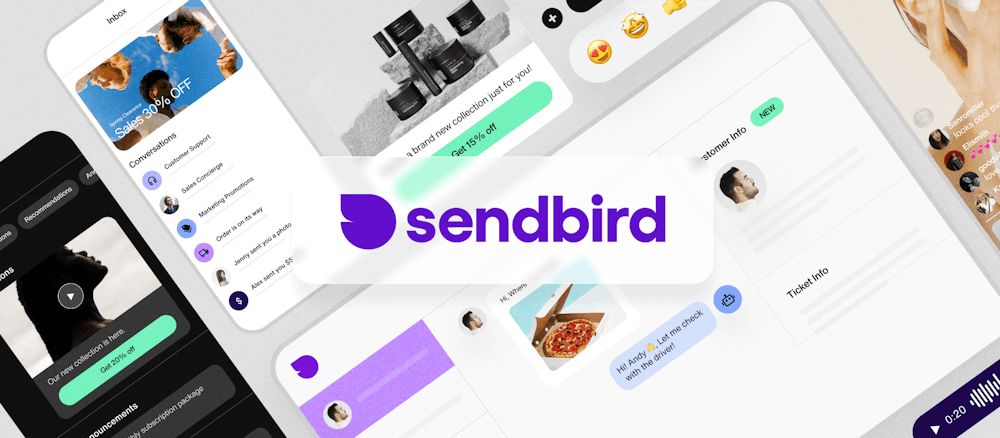Online social communities get more social during COVID-19

Social media and digital communities have been part of our normal life for years. But, when COVID made in-person interactions nearly impossible, these digital conduits became the only option for social connection.
A look at proprietary customer data from Sendbird, a leading communication platform for chat, voice, and video.*
Popular social media platforms were #trending
Since the start of the virus, social media engagement has increased by around +61%.
- Facebook usage is up by +37%
- China’s local social media usage increased by +55%
- Twitter users grew by +23%
- Snapchat increased by 11 million daily active users.
- LinkedIn saw +50% monthly usage
- Instagram live streaming is up by +70%.
- Pinterest grew by 32 million users.
- TikTok passed 2 billion downloads and saw 315 million installs in the first quarter of 2020. (The highest number of downloads for a single social media app in one quarter).
- Nextdoor daily sessions increased by +73.3%
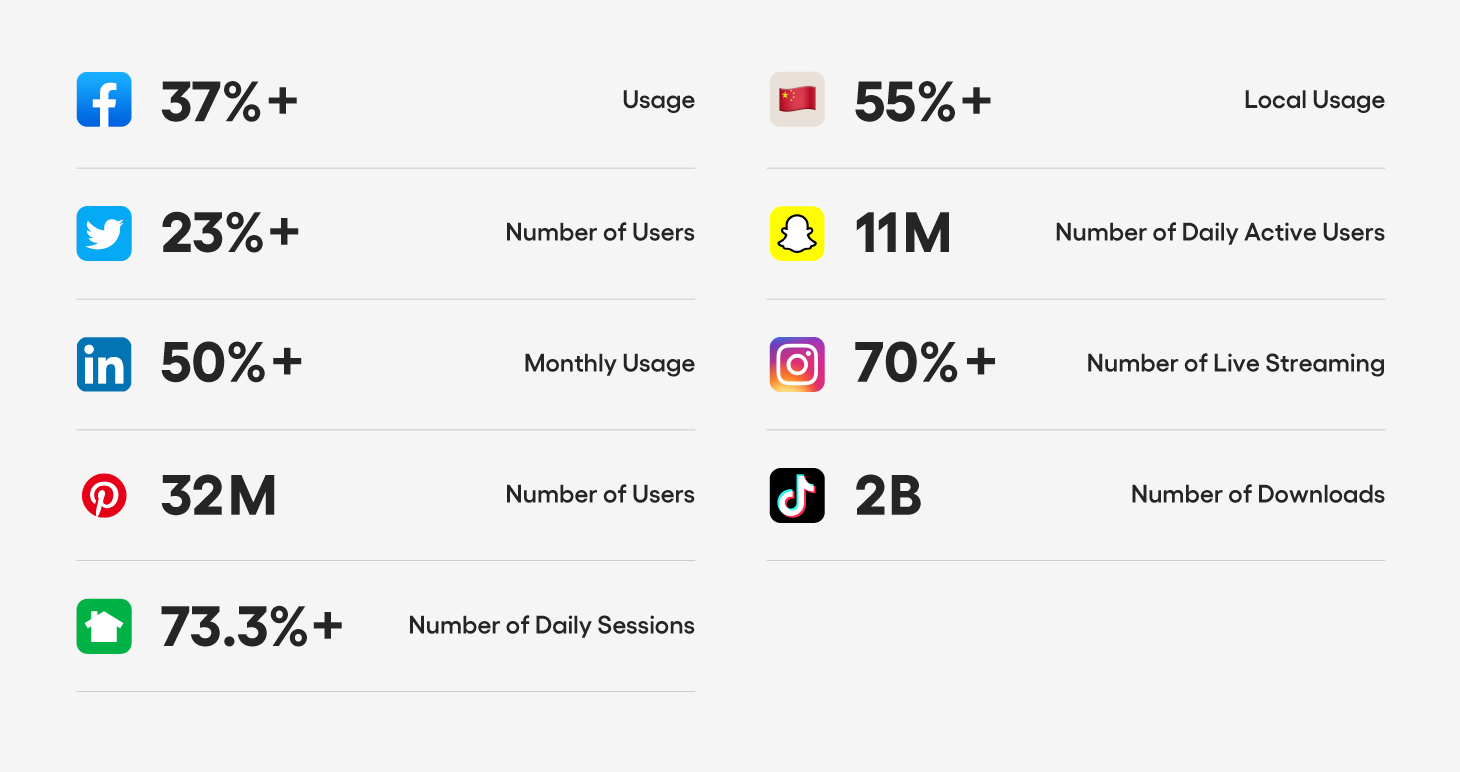
Sendbird customers saw their numbers skyrocket
Sendbird customers in the online social communities sector saw an average increase of 48% in monthly users and 20% in messages from December 2019 to the end of March 2020.
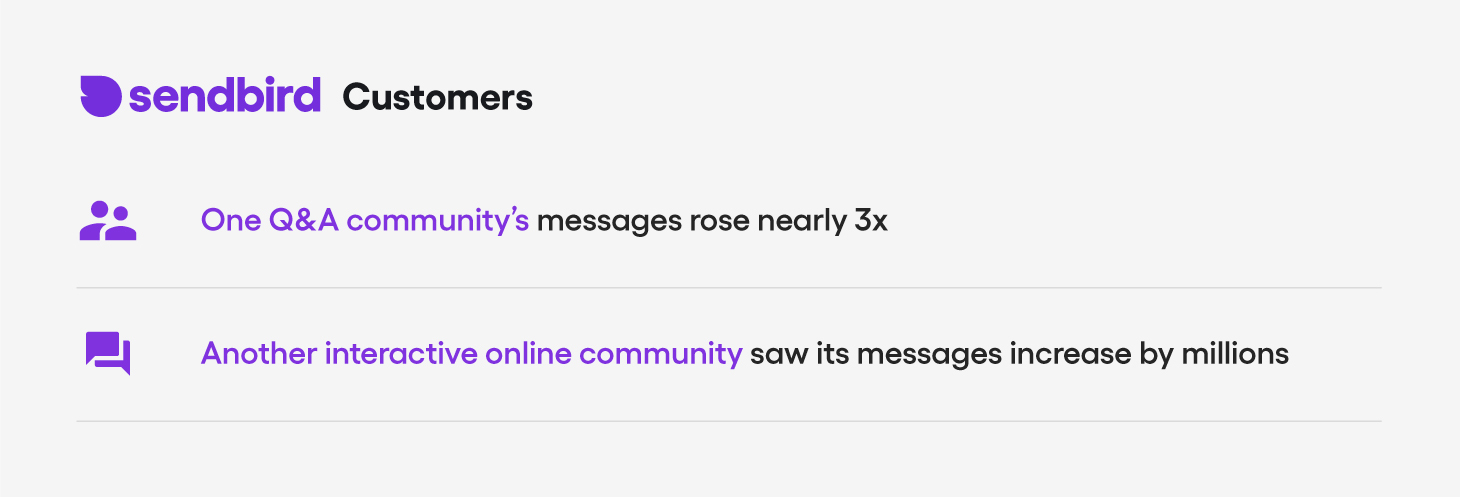
Many users took to social communities to #stayconnected
42% of people around the globe admit to spending more time on social networks since the outbreak. 74% of Americans say that social media has been important to them for staying connected to their close friends during COVID-19. 63% say social media has been important for staying connected to their local communities during COVID-19. 57% of users in the UK and US say that social media has helped them feel less lonely since the beginning of the virus. 40% of users have felt less pressure than usual to portray perfect, unrealistic images on social media, and instead, have felt more comfortable sharing struggles and social challenges.
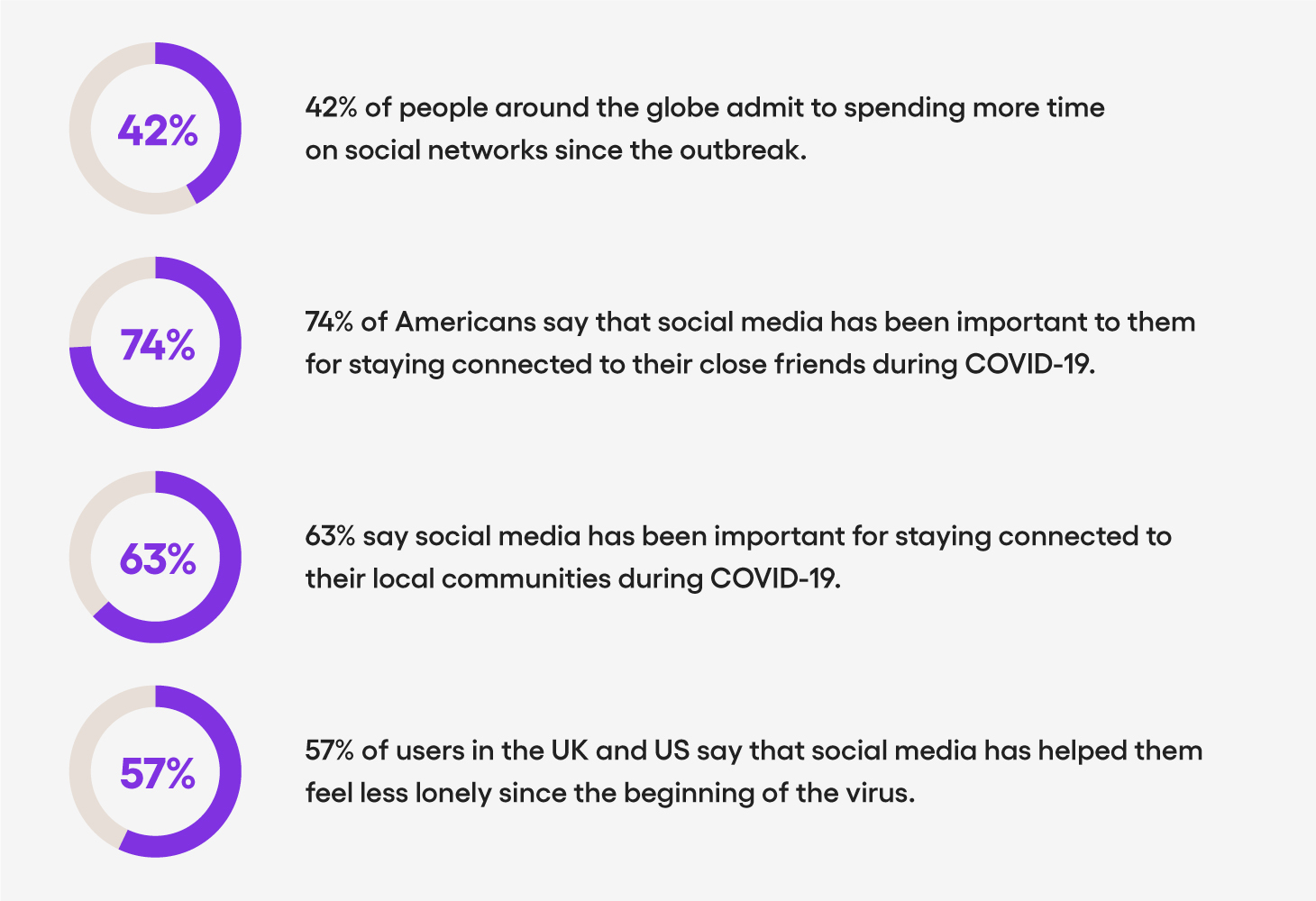
Other people are using it to #stayinformed
2/3 of social media users say that COVID-related posts surrounding the virus from public officials are helpful.

84% of Democrats & 50% of Republicans in the US report that social media posts from news organizations have been helpful.

Misinformation is getting #cancelled
The WHO declared that an “infodemic” (an outbreak of misinformation that spreads mass uncertainty and anxiety) was running parallel to the pandemic.
The threat of a potential infodemic was felt in the real world when 5G towers were burned down in the UK because conspiracy theories online had linked 5G towers to COVID-19.
In March, LinkedIn, Reddit, Twitter, Facebook, YouTube, Google, and Microsoft jointly issued a statement promising to band together to keep COVID-19 misinformation at bay:

While some users fear that social communities fighting to ban misinformation impedes free speech, others feel it’s a necessary step to combatting violence and increasing safety.
Recent surveys suggest that social communities are hotspots for misinformation:
- 60% of the people who believe COVID is linked to 5G radiation get their information from YouTube.
- 56% of people who believe there isn’t any hard evidence to support that COVID is real, get their information from Facebook.
- 58% of people who went outside, despite displaying COVID symptoms, say that YouTube is their primary information source.
- 37% of people who visited family or friends during the COVID outbreak cite Facebook as their news sources.

Your app is where users connect.
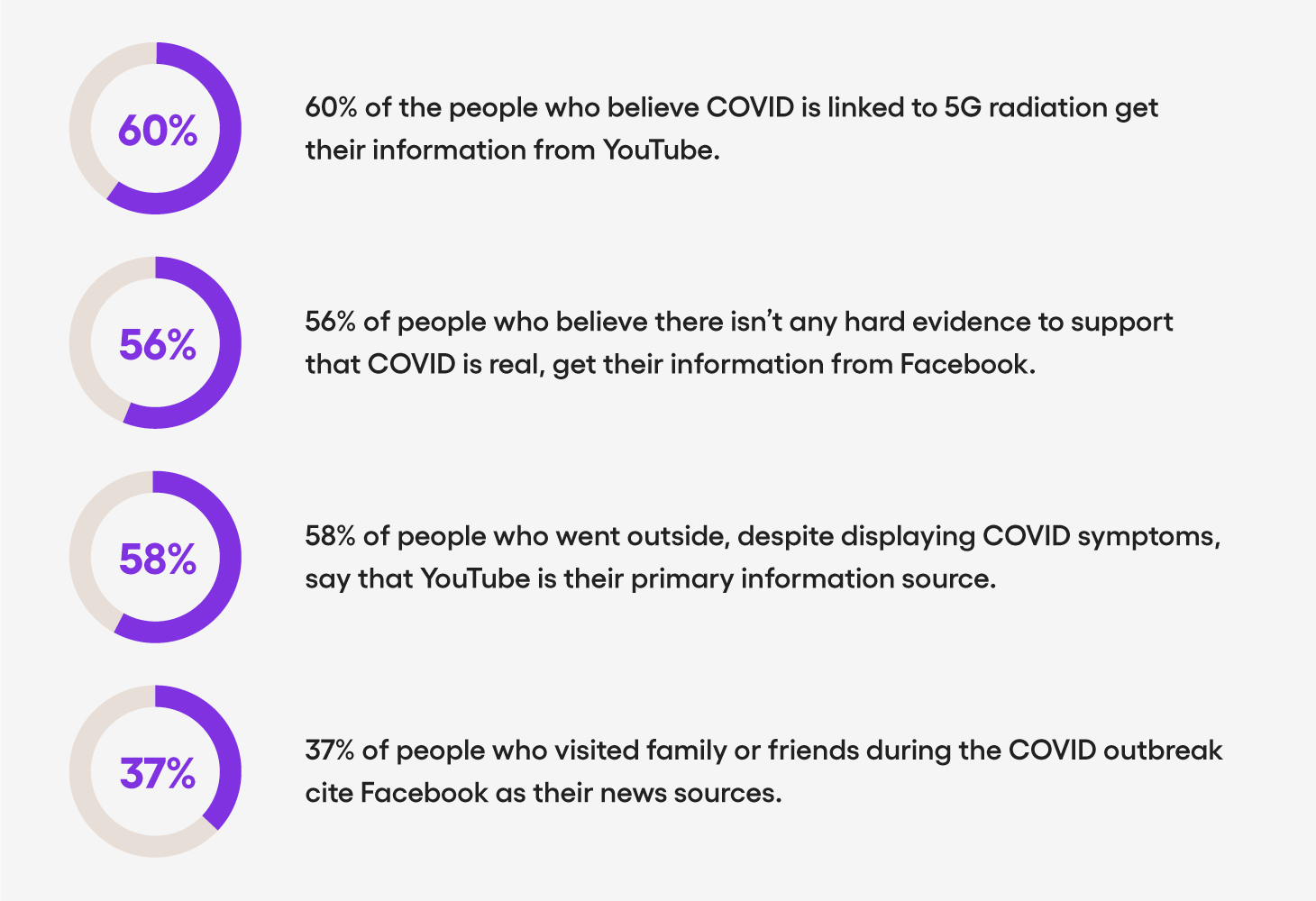
Social platforms have a role to play in the fight against misinformation, but they’re still navigating the extent of that role.
Twitter moderated Trump’s tweet that said, “When the looting starts, the shooting starts” with a public interest notice that it violated Twitter’s rules about “glorification of violence,” but Facebook left it — and other inflammatory posts of Trump’s — alone.
Twitter also took decisive action to disrupt the QAnon conspiracy theorists and associated content and accounts. They’re blocking URLs and no longer highlighting QAnon activity in conversations, trends, or search.
The fight against misinformation is vital and will continue to evolve as social media becomes increasingly prevalent in our lives.
Social communities keep us #together
The WHO recently joined TikTok, because, in these uncertain times, they knew they needed to reach a broader audience. To do that, they’re prioritizing connecting with people in a meaningful way.
Want to engage with your communities?
See how in-app video chat and messaging can help bridge the gap. Learn more.
*Unless otherwise noted, Sendbird internal data is based on mean differences in customer data between Q4 2019 and Q1 2020.














